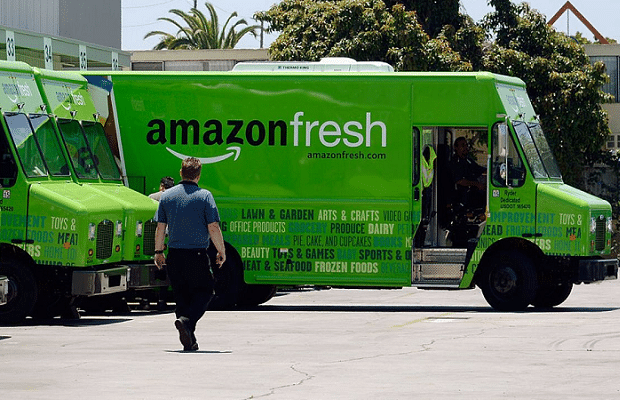
Previously, Amazon charged its customers $14.99 (£11.62) for delivery service – on top of the cost of a Prime membership.
Amazon Prime membership on its own costs $119 (£92.98) a year – but you can, of course, get delivery on a range of other products, not just groceries.
In comparison, Walmart’s annual delivery fee is $98 (£76), which works out to $12.95 (£10) a month.
Meanwhile Target chargers customers $99 (£77) a year – or $14 (£10.86) a month for free delivery on orders over $35 (£27.14).
However, Prime members can only make the most of the free delivery if they’ve previously ordered food from Amazon.
The option to receive groceries will show up automatically at the checkout.
Slight changes are also coming to Whole Foods deliveries. Amazon announced Tuesday that customers will be able to buy Whole Foods groceries through Amazon.com and the Amazon app, in addition to the Prime Now app. But new customers will have to wait for an invitation if they want groceries delivered from the chain through Amazon’s website and app. New customers can order some items on Prime Now for a fee.
Amazon bought Whole Foods two years ago for $13.7 billion.
The company said in statement that grocery delivery is one of its “fastest growing businesses.” Amazon maintains several grocery shopping options, including Prime Now delivery, Whole Foods, and 20 Amazon Go stores. It is also developing a new chain of grocery stores.
Earlier this year, Amazon launched one-day delivery for all Prime members.
Commenting on the move, Hugh Fletcher, Global Head of Consultancy and Innovation at Wunderman Thompson Commerce, said: “Amazon has been building its grocery arm for years, but completely free delivery within 1-2 hours for Prime users could be the step that takes its Fresh service and Whole Foods Market mainstream.
“Amazon is not only rapidly expanding into the grocery market, it’s finding a way to lock consumers into Prime for everything from day-to-day goods to weekly groceries. Prime is also conditioning shoppers to want quicker delivery, immediacy and convenience in every step of the buying journey – over eight in ten (84%) consumers said the speed of delivery was an important part of their purchasing decision, but this was at 87% for Prime members. As new shoppers enter the market, this need for speed will be paramount for a brand or retailer’s survival. Only recently, did a fifth of 6-16-year-olds we spoke to say that they will never buy from somewhere that can’t deliver the next day. And at the moment, only Amazon can feed this need.
“The recent quarterly results proved that while investment in this kind of infrastructure may prove costly, the result will keep the eCommerce giant ahead of competitors; it’s a short-term loss for long-term gain. The challenge moving forward for brands and retailers will be finding a way to work with Amazon that benefits the consumer, first and foremost. While the retail giant is a competitor, it is also a platform to give brands and retailers enormous scope to reach millions of consumers globally; this reach will expand further once Amazon enters the high-street. The only way for both Amazon and brands to thrive is to share the customer relationship, all the while continuing to provide the kind of service that is expected today in retail.”
